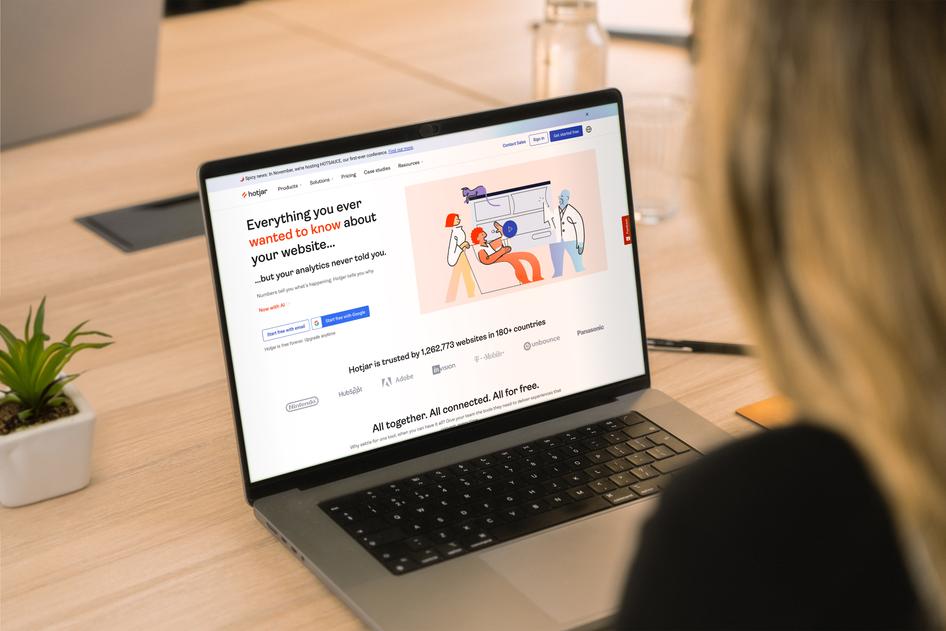Learn / Blog / Article
The anatomy of a stellar website: the dos and don’ts of design
Over the past five years, buyers have largely shifted their shopping habits to be primarily online. For brands wishing to remain competitive in the digital marketplace, this means an accessible and attention-grabbing website has become more important than ever before.
Consumers agree: respondents to Hotjar’s Coming in Hot report told us that they have higher expectations for brands’ websites than they did five years ago.
Features like tailored content, visual appeal, streamlined checkout processes, and loading times all have a major role to play in consumers’ perception of your brand. With this in mind, let’s explore what consumers listed as the design qualities they look for—and avoid—when shopping online, so you can accommodate the latest expectations.
Balancing aesthetics with functionality
A 'good' website, according to our panelists, is both pleasing to the eye and easy to navigate. Today’s consumers pay attention to layout and usability (95%), and they care about how content is formatted (95%). The majority (79%) noted that relevant images will also keep them clicking.
Readability is key to keeping folks engaged, with 85% agreeing that concise headlines on a website make them more likely to interact with it, and 93% listing accessible pricing information as very important when looking to do business online. Many users are willing to balance value with design difficulties, braving annoyances if a website offers informative content (71%) or personalized recommendations based on their preferences (36%).
Consumers often feel overwhelmed by choice paralysis, leading 91% to visit multiple sites before making a purchase decision. While window shopping, these buyers will typically compare:
Pricing (93%)
User reviews (77%)
Shipping or return policies (65%)
When it comes to elements that make brands stand out above the rest, users listed product configuration tools (37%) and videos (34%) as differentiators. Authentic customer reviews are also advantageous here, with 95% agreeing these make websites more credible, and 93% of users noting these increase their chances of doing business with a brand.
The consequences of poor design
With an overwhelming majority (95%) noting that they dislike cluttered website layouts, consumers will leave a site altogether if they can’t find pricing information within an average of three clicks. Running into issues on a site can damage their trust in a brand—negating a strong social presence (73%), good reviews (71%), and even past positive experiences (67%).
Respondents also listed the following as issues that would stop them from pursuing business with a brand:
Lack of straightforward information (83%)
Difficulty navigating the site (76%)
Loading issues (70%)
Keep an eye out for our next blog post, where we’ll describe consumers’ industry-specific web design preferences for ecommerce, e-health, and financial brands.
Related articles
UX design and analysis
Design a homepage that delights your users in 9 easy steps (with tips and examples)
While product, UX, and marketing teams help shape a website or app’s homepage, a more powerful group holds the reins: the users. Their needs and preferences are key deciding factors in locking in an effective homepage design.
Shadz Loresco
UX design and analysis
Coming in hot: the power of first impressions
Consumers have more than their fair share of vendors to choose from when shopping online. When attention is split between different brands and devices, ensuring your online presence stands out from the crowd hinges on first impressions.
But catering to the ever-changing habits and preferences of digital buyers is no small feat. That’s why Hotjar surveyed hundreds of US-based consumers—to reveal the insights you need to guarantee your website exceeds user expectations.
Hotjar team
UX design and analysis
How we use Hotjar for interaction design: 4 practical use cases
We don’t just design and build Hotjar—we’re users, too. Insights from Hotjar regularly drive our decisions, keeping customer-centricity top of mind.
This article unpacks how our product design team uses Hotjar for interaction design, a sub-discipline of user experience (UX) design.
Jon Evans
